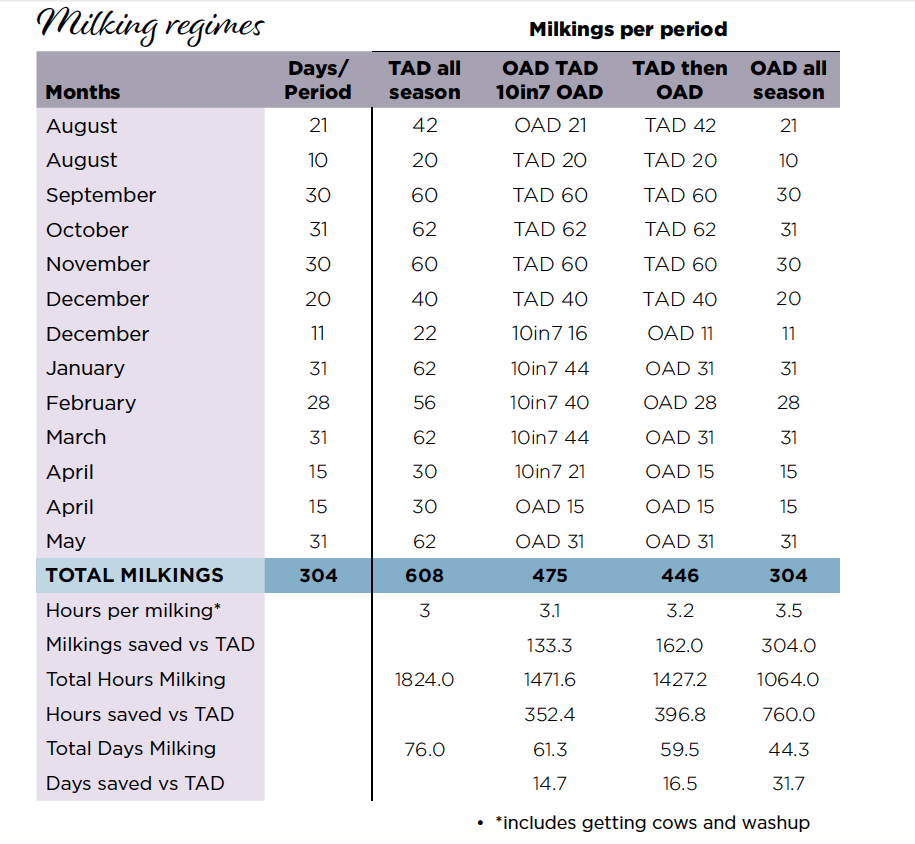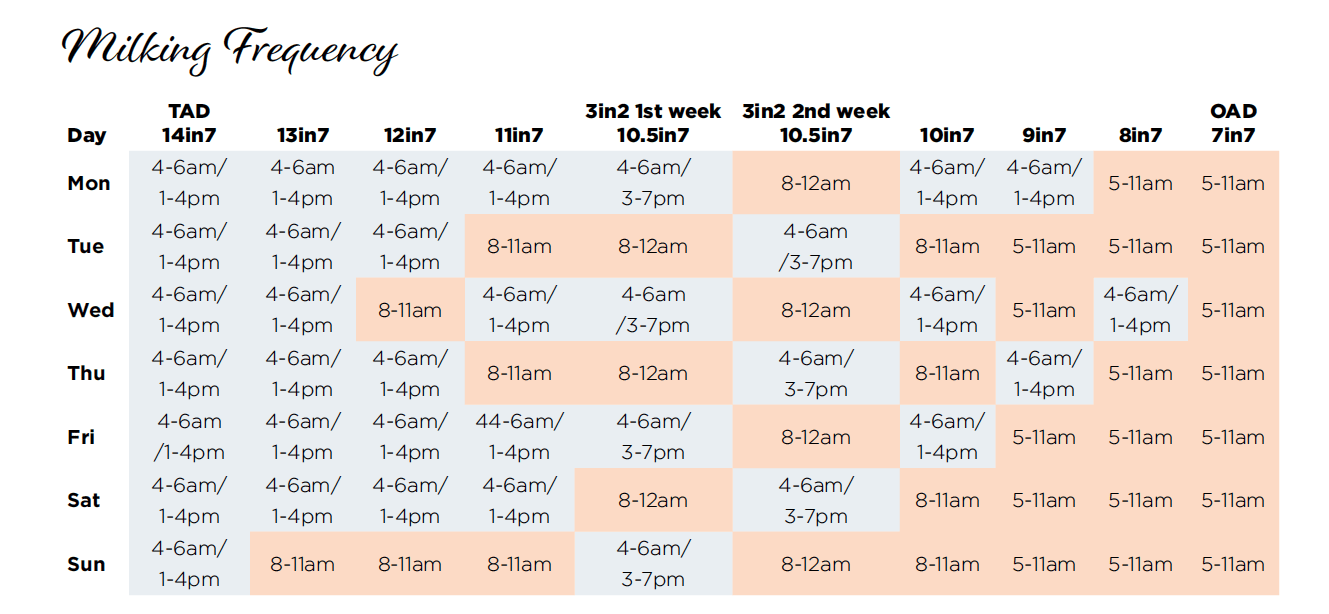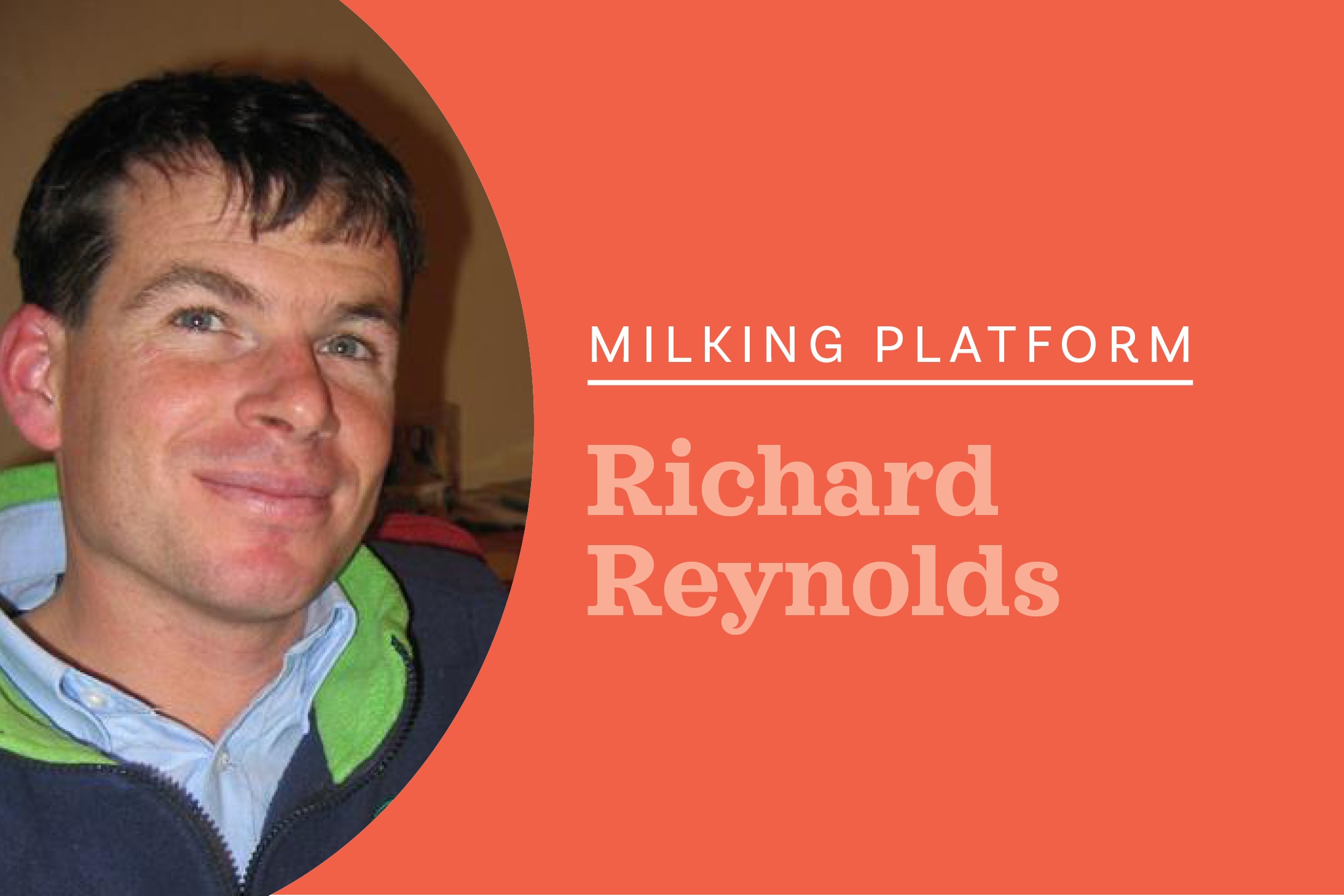Evolution in milking frequencies
Less than half the national dairy herd is now milked twice-a-day (2AD) throughout the season as farmers evolve their systems to integrate 3in2, once a day (OAD) and more recently, 10in7. By Anne Hardie.

Every farm and system is different and FarmWise consultant Brent Boyce says no milking frequency is better than another, but there has been what he calls a seismic shift in the past decade or so, away from traditional choices of TAD and OAD to other options that continue to evolve.
He says the shift has come from farmers being prepared to change their systems to better capture efficiencies of labour, farm logistics and time management. When 3in2 was developed, it began as 14/16/18-hour milking intervals which was then pushed to 10/18/18 hours and even down to 8/20/20 hours.
It still had a serious flaw though because planning became an issue for weekends and staffing rosters. That led to the 10 milkings in seven days (10in7) which was trialled by a number of farmers in the Tasman and Marlborough regions last season.
“My thinking around 10in7 was about how to capture the cow and production benefits of 3in2, but have equal benefits for the people, which is stable weekends.”
He says it basically combines TAD and OAD in a more structured weekend format. That means milking TAD on Monday, Wednesday and Friday. Then OAD on Tuesday and Thursday, with a double up of OAD on Saturday and Sunday.
The milking timing of 10in7 can be quite flexible, especially after four months of lactation and the cows have come off their peak. He suggests farmers follow the same milking times they usually follow for TAD. For example, milking 5am and 3pm which is a 14/10-hour split, on Monday, Wednesday and Friday.

If the cows are being knocked around by heat in the summer, milk later in the cool of the evening so that those days have a 5am milking and then 6pm or 7pm.
For the OAD milkings on Tuesday, Thursday, Saturday and Sunday, he says farmers can basically milk whenever it suits – 9am to 11am, earlier or later.
“With all these milking frequencies, you can use a combination of them throughout the season. You don’t have to have one milking frequency for the whole season. It’s about specifically targeting the frequency of milk harvests per day to coincide with the quantity of milk being produced – something approximating 1.0kg MS per milking.”
Through the season, a range of milking frequencies might go something like OAD for the first three weeks of lactation, TAD over the peak into December, 10in7 or 3in2 over summer and OAD in the autumn.
Changing the frequency of milking to coincide with how much milk is being produced is expected to produce the same total amount of milksolids harvested through the season. But with far fewer total milkings, he says.
- The weekday TAD to OAD regime gives you splits of 10 hours; 19 hours; 19 hours; then back to the 10, 19 and 19 cycle again (accept in weekend when 19, 22, 21)
- This will minimise losses compared to straight OAD.
- 10in7 will likely have slightly less production than 3in2 (?).
- If it doesn’t work – go back to TAD; do the traditional 3in2; or go OAD.
- Or try other options of milking frequency
By milking OAD to TAD to 10in7 and then back to OAD (see table 3), total milkings fall from 608 on a TAD system for 304 days of lactation to 475 milkings for the season.
“Our cows are very flexible and really enjoy less visits to the shed,” he says.
“And the need for family time for everyone in the hazy days of summer is paramount. It has been a turbulent year, what with Covid chaos, climatic challenges and changes in legislation. A lot of people have been under pressure and it is important that we have options and alternatives so that people can rest and recuperate.”
Boyce says many farmers have been doing similar routines to this and equalling or bettering their production achieved on a TAD regime throughout the season.
“That is the critical point – we can do a lot less milkings and achieve similar or better production to whole season TAD. A bonus from doing something like this is that many farms have 45-50 paddocks. After intense break feeding of the first-round grazing rotation in spring, simply go to one paddock per milking until the end of the season.”
That would mean a 22-25day round when on TAD in spring; 31 to 35 day round on 10in7 or 3in2 over summer; then a 45-50-day round in autumn on OAD.
Regardless of milking regime, Boyce says the important thing is feeding the cows properly. Reducing milking frequency is not an excuse to reducing feeding when production is the goal.
He says the findings from DairyNZ’s research into milking frequency which is now into its second year of 3in2 trials, backs up what farmers are seeing on their farms and that gives them confidence they are heading in the right direction.

A workshop and presentations on 10in7 and 3in2 milking frequencies are included at this year’s (2021) South Island Dairy Event (SIDE) with a panel that include Dr Paul Edwards from DairyNZ, Boyce and a farming couple. (who is the farming couple?)
After a couple of months on twice-a-day (TAD) milking at the beginning of the season, Jason and Beth Macbeth switch to 10in7, then drop more milkings to once-a-day (OAD) at the beginning of December.
Switching around milking frequencies is a lifestyle choice and as 50:50 sharemilkers, it helps them retain staff and reduces the number of empty cows.
The couple can manage the 620-cow farm in Golden Bay by themselves on weekends to give staff time off, while taking time off themselves during the week.
Jason says the TAD regime at the beginning of the season gets the cows to peak production and they follow it with about six weeks of 10in7. At the missed milkings during 10in7, he just gives the cows a new paddock.
“I actually give them more feed and still maintain our round lengths. And they hold per cow production as well as twice a day.”
They switch from TAD to 10in7 early enough to benefit reproduction because as sharemilkers, a big part of their business is having cows in calf at the end of the season.
Last year the 10in7, then OAD worked well for them on a fully irrigated farm, while this year they are testing it on a challenging, non-irrigated farm in the bay.





